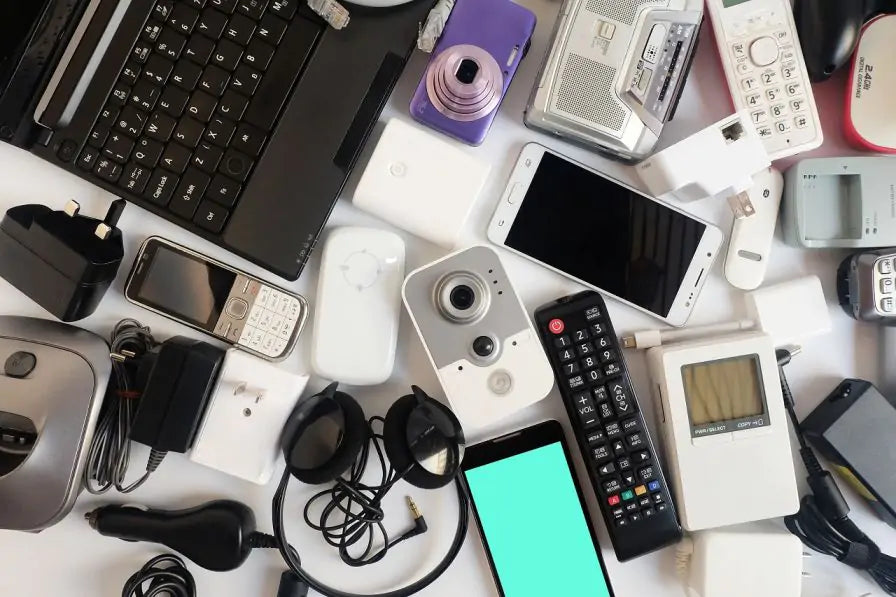Your basket is currently empty.
Shop NowHow to Recycle - Electronic Waste

How to recycle... Electronic waste
Just like any other modern economy, UK consumers buy a lot of electronic gadgets. There are around 36 million computers being used today, and around 51 million of us are connected to the internet. Add in our apparent addiction to smartphones and you have a lot of gadgets.
And because technology moves so fast these days, it seems like no sooner have we bought an electronic device, the next model or upgrade is announced. This results in a lot of electronic waste being produced.
It’s estimated that households and businesses discard 2 million tonnes of electronic waste each year in the UK, and electronic or e-waste is the fastest growing waste stream.
What is electronic waste?
Electronic waste can be either household appliances like ovens, fridges or washing machines, which make up more than 40% of electronic waste, or smaller items like computers, TVs, kettles, hair dryers, tools, and electronic toys.
This type of waste contains a lot of valuable materials like glass, ceramics, and precious metals.
Why is it hazardous?
Electronic waste is made up of a mixture of different materials and some of them are hazardous, such as arsenic, cadmium, lead, and mercury. They are a risk to health and this is why this type of waste needs to be managed and disposed of correctly.

Manufacturers and retailers have responsibility
The Waste Electrical and Electronic Equipment (WEEE) regulations apply to manufacturers and retailers of electrical goods whether they sell the directly, from the internet, by mail order or over the phone.
Manufacturers and retailers must:
- Provide a free return service for old products if they buy a newer version of the same product
- Tell customers that they provide that service
- Tell customers how they can reuse or recycle electrical equipment and why it needs to be disposed of separately from other waste
Where does e-waste go?
Some recycling of electronic items happens in the UK, but sometimes e-waste is sent to countries in Africa and Asia, where it causes pollution and puts people’s health at risk.
Some e-waste is dumped in landfills in the UK, and heavy metals leach into the soil and harmful gases are released into the atmosphere.
The UN has estimated that there is as much as £34 billion worth of valuable materials lying in landfill that could have been recovered.
Legal directives governing e-waste
There is an EU Waste Framework Directive, which covers the recovery, disposal, and transport of all kinds of waste, including e waste, and it stipulates that as much waste as possible should be reused or recovered.
Following this, the Waste Electrical and Electronic Equipment (WEEE) and Restriction of Hazardous Substances in electrical and electronic equipment (RoHS) directives were implemented. This legislation aims to reduce the amount of e-waste that ends up in landfill and to recover hazardous materials before they reach the stage where they might be sent to landfill.
What can you do about it?
The only way to tackle the e-waste problem is to reduce the amount of waste we produce. Think about whether you really need that smartphone or laptop upgrade. If you have no choice but to get a completely new product, consider whether one of these options would be better than discarding it or leaving it in a cupboard or drawer:
Can you take it to a local authority recycling point or household waste recycling centre?
Can you donate it to a charity shop?
Can you sell it on eBay?
